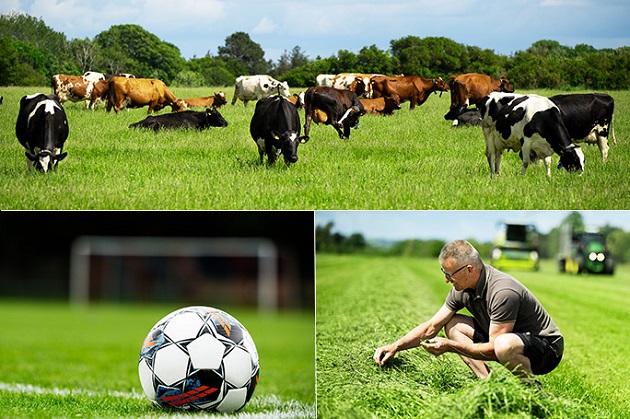Tetraploids - for cows feed or sporty feet?
Tetraploids were originally developed for forage because they had broader leaves, higher sugar content and better winter hardiness.

Today 4N turf type perennial ryegrasses have gained popularity amongst turf managers, who explored the benefits at their sports fields.
In fact, tetraploids have many unique features which are also ideal for a turf grass to cope under even the most difficult conditions. But planting a high yielding forage grass in a lawn does not seem to be such a great idea. This challenge was grabbed by skilled plant breeders, who set up a breeding program.
Climate changes and potential pesticide bans or legislation in many European countries push demand for more disease-tolerant perennial ryegrasses, and the tetraploids have clearly proven to be more resistant to important turf grass diseases.
Many years went into developing tetraploid perennial ryegrass for turf, and a focused plant breeding has perfected varieties of this “new” species over time. On the official turf variety lists in Europe¹, they are now even recommended for professional sports pitches.
Learn more about how DLF has had succes with the development of a new generation of tetraploid perennial ryegrasses for supreme turf in the European Seeds' Insiders article
